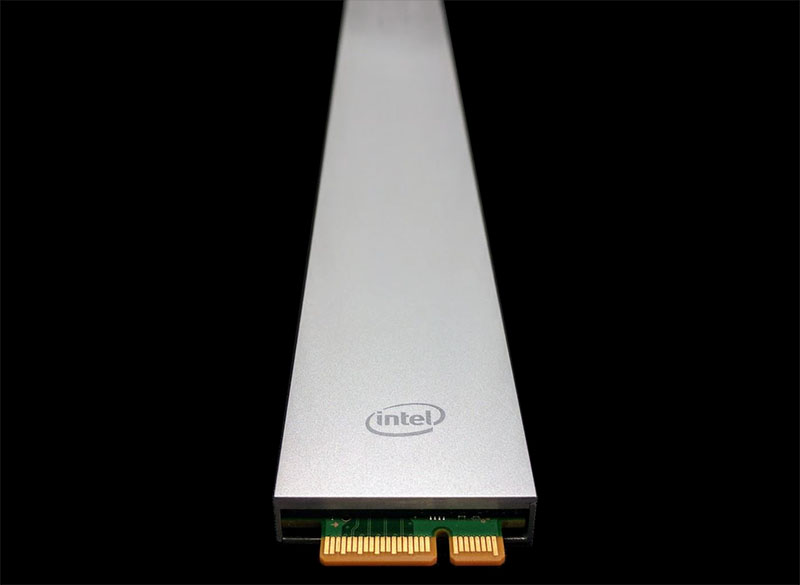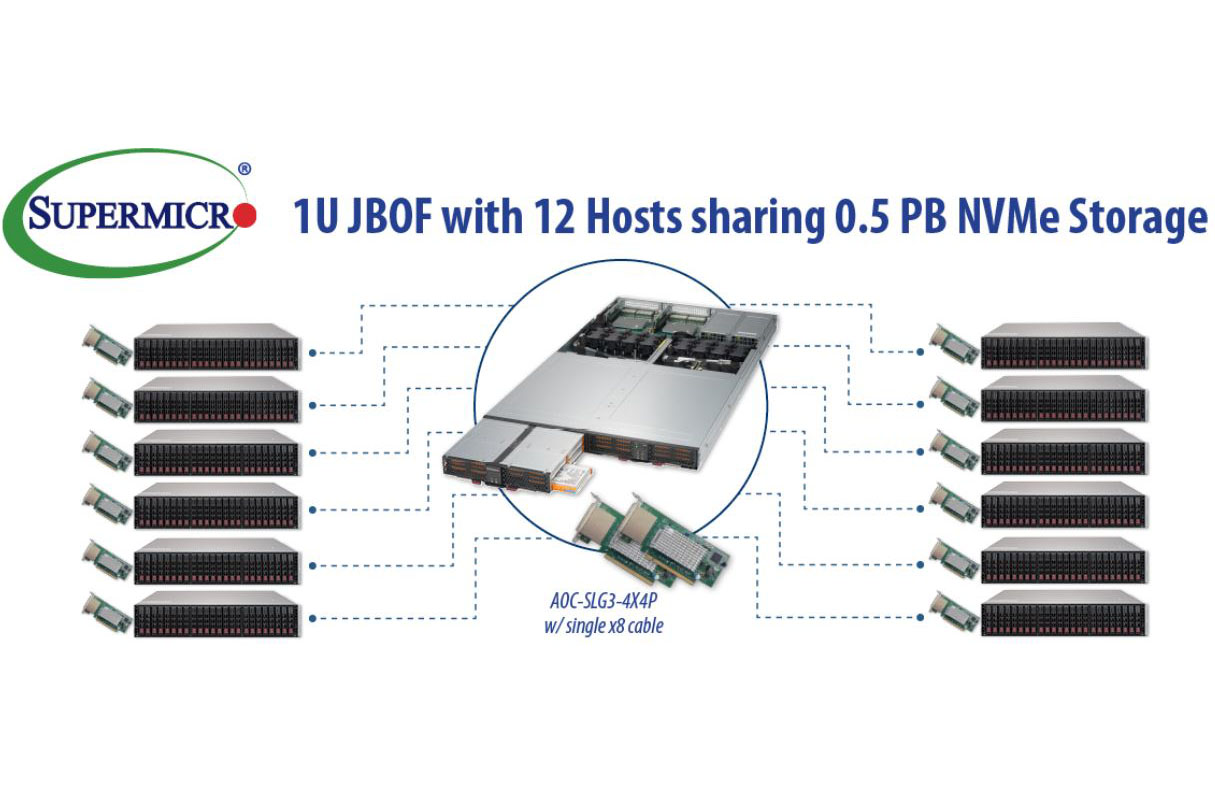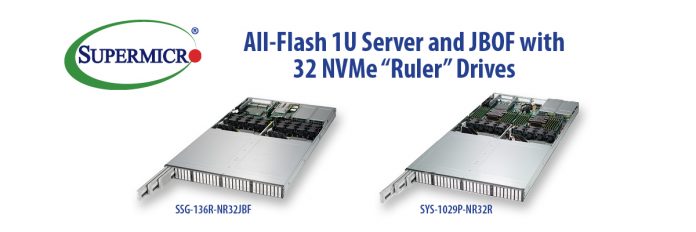Supermicro announced the availability of two new all-flash NVMe platforms based on the Intel “Ruler” SSD form factor. The two platforms encompass a 1U server and a 1U JBOF called the SSG-136R-NR32JBF that each support 32 front loading hot-swap Intel ruler form factor NVMe SSDs.
Background Intel “Ruler” SSD Form Factor
At STH, we covered the Ruler SSD form factor in our piece The Intel Ruler SSD: Already Moving Markets. The first ruler SSD is the Intel DC P4500 which Supermicro is using.

The Intel SSD DC P4500 is the first SSD to take this form factor and is thermally optimized for dense applications. Typical U.2 SSDs are in a 2.5″ form factor that was originally designed for hard drives. SSDs, by nature of their architecture, do not need to fit a rotating media and motors. As SSDs have become the primary data center storage media, companies have started to innovate in form factors, designing flash centric designs instead of optimizing for backward form factor compatibility with hard drives.
Supermicro SSG-136R-NR32JBF JBOF
Leveraging the new “ruler” form factor, Supermicro has two new 1U NVMe systems that can utilize up to 32 ruler SSDs. Each Intel P4500 ruler SSD currently tops out at 8TB per drive which means the systems are capable of 256TB of flash per 1U today. Future designs are likely to lift this figure considerably.
The two systems encompass two different approaches to leveraging this flash capacity. Supermicro has a 1U server platform with the compute and RAM in the server primarily for NVMeoF implementations.
The company also has a 1U JBOF platform called the Supermicro Supermicro SSG-136R-NR32JBF that can attach up to twelve nodes to the system that can share the flash storage. Supermicro has other form factors, including a U.2 form factor JBOF design that can also share NVMe storage to 12 hosts that we covered in Supermicro 0.5PB 1U Multi-Host JBOF and RSD 2.1 Released. Here is a diagram to what this looks like:

Supermicro claims aggregate throughput of the ruler SSD systems of around 64GB/s. The company also claims that the systems will be able to support up to half a petabyte of storage with 16TB SSDs later this year and 1PB next year with the EDSFF standard.
The system comes standard with redundant hot-swap cooling fans and power supplies along with tool-less drive trays for increased serviceability and redundancy. For accessibility, the solution supports remote system on/off and system management as well as remote power cycling for each individual drive.





Considering the quasi-exponential growth of capacity in individual drives, has STH particular experience of Micron’s firmware tool for balancing capacity and performance at the over-provisioning / striping-parity level?
While Micron’s website speaks of this facility only in terms of availabilitiy to OEM customers, a client of ours mentioned that at least initially, their Micron channel rep was warm towards their request for demonstration. Said client has already a highly replicated available capacity in petabytes of tiered performance storage using plentiful spinning rust and IBM Spectrum Scale. Micron might be simply eyeing a potential commitment at close to a hockey stick inflection point of this company’s growth, meaning to demonstrate the capability in presentation with a OEM partner. But I know that the context of the inquiry was very clearly in exploring the client planning assessment of internal hardware designs, which they have been pursuing for a few years, as they close on the hoped for inflection point of growth. This company has built a degree of in house experience that I believe might be appropriate to building a protocol suite passing PCI signalling alternately over silicon switching and over INFINIBAND / OmniPath. I believe a feature that interests them is to substitute a deprecated cluster or “array” (loosely speaking) with the remote mirrors, to reduce rebuild times.
Generally, at this capacity level, I am not experienced sufficiently to know directly but I might feel like I would want such a capability as Micron has, available to me by some means.
Any comment greatly appreciated!